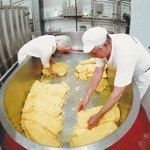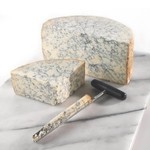Culture shock for unpasteurised cheese

One Sunday morning in February 1989, the then Minister of Agriculture, John MacGregor, announced his intention to ban the sale of cheese made from raw, unpasteurised milk. But by July, after much lobbying from cheese suppliers, he had dropped the idea.
Yet food scares over unpasteurised cheese still continue to make the headlines. On December 19 2005, for instance, newspapers reported that a dangerous strain of E. coli was feared to have contaminated unpasteurised French Camembert cheese being sold by more than 100 British retailers, including Waitrose.
Further afield, Australia only recently lifted its ban on French unpasteurised Roquefort cheese after claiming for years that it was unsafe. And in the US, unpasteurised cheeses are still severely restricted, with different states having varying regulations about the sale and consumption of raw dairy products.
Mon Dieu! Worse still for cheese worshippers is the news from France that the number of cheeses made with unpasteurised milk is falling as industrial dairies pasteurise their milk. It is reckoned that about 50 raw milk cheeses have disappeared in France in the past three decades.
Yet demand for unpasteurised cheeses in the UK is rising as consumers appreciate the flavours of both hard and soft cheeses made from raw milk. Not only does pasteurisation destroy pathogenic bacteria, it can also destroy much of the unique flavour of the raw-milk version.
Today, there are something like 100 British artisan dairies now producing raw-milk cheese. And even the Tesco Cheese Challenge 2008 - to get small UK cheesemakers to come up with a unique cheese to launch in Tesco stores in the autumn - is open to unpasteurised cheeses. But the competitors must comply with Tesco's guidelines for the manufacture of raw-milk cheese.
And this appears to be the rub. Dairies say they are finding it increasingly difficult to meet health and safety rules governing the processing of unpasteurised cheese, particularly the ramifications of hazard analysis critical control points (HACCP) legislation. Many small existing and would-be raw-cheese producers live in fear of the warm breath of the environmental health officer breathing down their necks.
But a new pan-European research project could provide a way of enhancing the safety of unpasteurised cheeses, while making their processing and production less of a hassle in the HACCP department.
SafeCheese project
The three-year @1.45M SafeCheese project aims to find a number of 'friendly bacteria' that will kill off the 'bad' bacteria salmonella, listeria and E Coli that can get into raw-milk cheeses. It then wants to find a way of producing these friendly bacteria so that dairies can easily add them to their raw cheese cultures without spoiling the taste of the resultant cheese. The upshot is to be able to provide an added layer of safety for unpasteurised cheese manufacture.
The SafeCheese project will also hold a series of seminars and conferences to tell raw cheese producers what it has discovered about the way good and bad bacteria get into raw cheeses and train and educate them about how to improve their HACCP safety control processes. There are some 910,000 enterprises in Europe that are making a living out of milk and cheese production.
Research around the world has indicated for some years now that certain strains of lactic acid bacteria appear to reduce or prevent the growth of pathogenic bacteria in raw cheeses and other foods. Nisin is one example. Produced by the dairy starter bacterium Lactococcus lactis, it is used as a preservative in heat processed and low pH (acidic) foods, but its efficacy is limited.
Leading the SafeCheese hunt for more effective friendly bacteria is Matforsk, the Norwegian food research centre. Since the project started 18 months ago, its job has been to test samples of unpasteurised cheese from six European countries for their natural ability to kill off salmonella, listeria and E Coli. Matforsk is now quite close to identifying which strains of protective lactic acid bacteria in these cheeses have been responsible.
Once samples of these bacteria have been isolated and grown, PERA (formerly the Production Engineering Research Association) in the UK will freeze-dry them and assess their potency and shelf-life. Samples of these freeze-dried protective cultures will then be sent out to cheese makers in the project for them to incorporate into experimental batches of a range of raw-milk cheeses.
Finally, Matforsk will assess the results to decide which is the best bacteria, or combination, to ensure protection against all three pathogens: salmonella, listeria and E Coli. It will also conduct consumer taste surveys on the experimental cheeses. If all goes well, the protective culture will be taken up commercially so that raw-cheese makers - and the headline writers - can settle down to a quieter life.
The Food Processing Faraday Knowledge Transfer Network (KTN) in the UK has been responsible for selecting samples of raw cheeses for Matforsk. Ken Johnston, science director, says the aim of the SafeCheese protective culture is to give an extra level of security, an extra level of assurance, to raw-milk cheese makers without affecting the sensory qualities of the cheeses.
"But the project is more than that," says Johnston. "It has also a training and dissemination element. A lot of people who use or want to use raw milk in cheese making are quite small producers. So this project aims to give them general guidance and help with the HACCP approach to hygienic practices."
Matforsk has so far analysed something like 130 cheese samples for the SafeCheese project. "We have found cheeses that prevent pathogenic bacteria from growing. Now we are trying to identify the bacteria in these cheeses that are the ones responsible," says Cathrine Finne-Kure, senior project manager at Matforsk. "But it is a long way from finding these bacteria to tracking down the optimal ones," she cautions.
"However, even if we don't find the optimal culture, we will have an enhanced understanding of the unpasteurised cheese process," she adds.
Once Matforsk has found bacteria with protective properties, PERA's job is to get them into a usable form for cheese producers, says Donna Palmer at PERA. "Our task is to freeze-dry the bacteria, conduct accelerated shelf-life tests on it and look at its storage and stability. We want to make sure that when the cheese producers get it and add it to their starter cultures it will still be active and work. We expect to be getting samples from Matforsk to start our work within the next couple of months," she says.
Artisan cheesemaker
Northumberland Cheese at Blagdon is a small creamery near Newcastle upon Tyne that produces a range of traditional artisan cheeses, including an unpasteurised cheese. Although it doesn't have its own milk, founder Mark Robertson says he has a good relationship with his milk suppliers. Yet when he makes unpasteurised cheese, he says he senses the environmental health officers breathing down his neck.
"In one sense that's not unreasonable. If you produce your own milk and make your own cheese then you have complete control of the process. But we don't have our own milk.
"We do make an unpasteurised cheese at the moment. But all the regulations, the auditing by the BRC (British Retail Consortium) - it all makes it very constrictive to do," he complains.
So when the Food Processing Faraday asked Robertson to join the SafeCheese project he accepted because he hopes that its results will give him more flexibility in making unpasteurised cheeses.
"I am a rather small dairy and I need to grow. It seemed to me that raw cheese could be another adjunct to our business. I'd probably go for an unpasteurised hard cheese - that's where our expertise is," he says.
The results of SafeCheese won't allow him to get away from good dairy husbandry and good hygiene, says Robertson. But he believes it will be an extra tool in his armoury.
"Also, if they get it right, then think about the energy savings from not having to pasteurise the milk. My energy bill here is staggering. We have gone from £4,000 a year to £11,000 a year just on electricity. And our oil bill has tripled.
"If we can make unpasteurised cheese safely and the powers-that-be don't wobble at the knees every time unpasteurised cheese is mentioned, then it will be worth it." FM
Key Contacts
- Food Processing Faraday KTN 01664 503640
- Matforsk 00 47 64 97 01 00
- Northumberland Cheese 01670 789798
- PERA 01664 501501
















